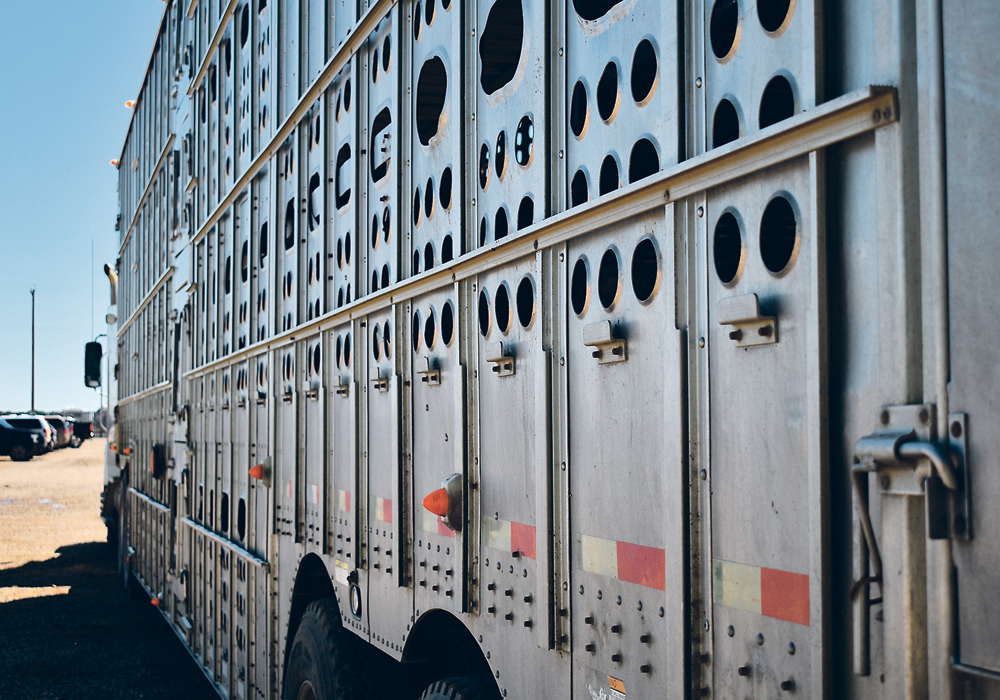The complex project involves many types of livestock and various intermediary sites, such as auctions and assembly yards
The complexity of developing a code of practice for transport of 14 different species of livestock has forced some changes to the process for the National Farm Animal Care Council.
The last Livestock and Poultry Transportation Code of Practice was developed in 2001 and the updated version is scheduled to be completed by March 2023.
It is the largest ever undertaken by the council, involving not only many types of livestock but also various intermediary sites, such as auction markets, assembly yards, processors and the trucks themselves.
That has created challenges for a process that has previously focused on on-farm practices.
Read Also

The Western Producer Livestock Report – November 13, 2025
Western Producer Livestock Report for November 13, 2025. See U.S. & Canadian hog prices, Canadian bison & lamb market data and sales insights.
“We had a plan and as we got into the details and got the working groups up and running, it became obvious that there was a lot more common elements between species than we had originally expected,” said NFACC general manager Jackie Wepruk.
So, rather than initially developing species-specific information related to transport, the process will first draft content that is common to all animals covered in the code.
Wepruk said that includes things like the need for transport truck driver training, protection against excess cold and heat while in transport and equipment requirements, for example.
Once the common elements are outlined, committees will work on species-specific requirements and recommendations for inclusion in the code, Wepruk said.
“It also should reduce any duplication when we’re referencing the health of animals regulations.”
Also unique to this code is the need to include auction markets, assembly yards and other off-farm facilities where animals are loaded and off-loaded. That is likely to require an additional module in the completed version.
In an update about the process, NFACC describes the plan: “The expertise of species-specific WGs (working groups) will continue to be used to tease out animal-specific content. Once the WGs have gone as far as they deem appropriate, their work will be paused until such time that the common content has been populated.
“At that point, the species-specific WGs will reconvene to draft additional species-specific content as needed.”
Wepruk said the change in approach is not likely to affect the proposed completion date.
“We have kind of a hard deadline of March 2023, when the funding ends,” she said, but the council had anticipated this code would take time.
“We already knew that this was going to be the most complex endeavour that we had ever undertaken as far as codes. We knew we were going to have challenges.”
The new approach appears to be more efficient than the original one, Wepruk added.
The NFACC is also developing or updating several other codes of practice. The farmed finfish code is new to the list and will deal with farmed trout, salmon and char, their transport and their on-farm preparation for transport.
The goat code is underway and is expected to be ready for public comment this fall, after which a final updated version will be ready in fall 2021.
The dairy cattle code working group has recently examined data on calf separation, pain control and various housing topics that arose from the scientific committee’s input. A husbandry chapter on stockmanship, milking and handling will be revised.
The updated dairy code of practice is scheduled for completion in fall 2021.
















